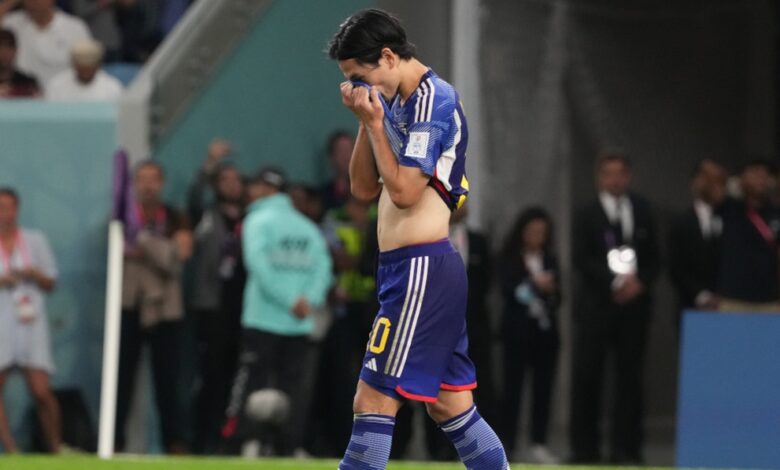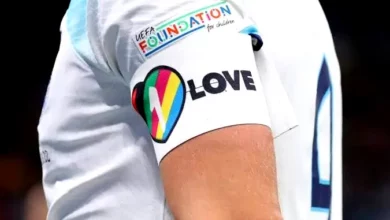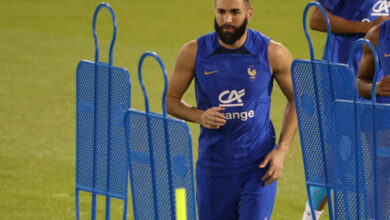Why do the finest footballers in the world take such bad penalties?

Over the next two days, there are slim chances that a World Cup penalty shootout will occur. In the last nine tournaments, there has been at least one in the quarterfinals; it peaked in 1986 when three of the four games were decided on penalties.
Few of those, though, could have had a series of penalty kicks as appalling as those in the games of the last 16 in Qatar. Dominik Livakovic of Croatia stopped tame shots from Takumi Minamino, Kaoru Mitoma, and Maya Yoshida, causing Japan to lose with a whimper.
Prior to his team’s matchup with Morocco in the round of 16, Spain coach Luis Enrique was adamant that the tournament was not a lottery, noting that he had instructed his players to take 1,000 practice penalties while playing for their clubs.
The first three players to try one all failed to convert, so either they weren’t paying attention or it didn’t work. Pablo Sarabia, who was substituted in at the very end of the game just for that purpose, struck the post.
It was a puzzling result by a team made up of some of the most technically gifted athletes in the sport, especially considering that they were eliminated at the same round on penalties by Russia four years prior.
The startlingly subpar kicks were the standout feature of both 2022 shootouts. The six penalties saved by the losing teams were all executed with little force and not directly in the corner, a tactic that baffled observers and handed the keepers easy victories.
Nielsen Gracenote, a data business, examined every penalty shot at the last five World Cups, including Qatar, and discovered that shooting low to the right or left has the lowest success percentage (50 percent or 68 percent, respectively).
Unsurprisingly, attempts made towards the top area—whether wide or in the center—converted 100% of the time (20 times in this sample). Even though going high might seem to carry a higher danger, only five penalties have struck or crossed the bar over that time, compared to seven that have hit a post or gone wide.
Alan Shearer, a former England striker, had a stellar record of taking penalties, often slamming the ball high into the corner so that the goalie had little chance of saving it even if he dove for it.
BODY LANGUAGE
Why then do so many players seem unable to support their aim in a small yet effective top corner and choose to go low instead? Dr. Matt Miller-Dicks, Senior Lecturer in Skill Acquisition at the University of Portsmouth, told Reuters that while aiming for that portion of the target, “the margin for error is just that bit less.”
“You can’t hit a penalty too low because the ground’s there but obviously you can hit it too high, so it’s a sort of safety net. In less pressurised situations players might be more confident to go for the top corner.”
Body language and self-assurance also matter; the Japanese players all had a frightened appearance as they lined up their efforts. Additionally, it appears that the growing usage of stuttering run-ups and tricks to fool the keeper frequently causes more harm than good.
“I did get a sense of that from some of the poorer penalties in those two shootouts it was maybe a case of players approaching quite slowly in their run-up, maybe hoping that the goalkeeper will commit to one side, but then not doing that and the taker not getting it close to the corner and the keeper making what looks like quite a comfortable save,” Miller-Dicks said.
Naturally, some people are more psychologically affected by the circumstance than others are, but according to Miller-Dicks, the harm can be done long before the player actually places the ball on the area.
“Research shows some of the things that they have difficulty with is not so much the kick in itself, but standing on the halfway line waiting and the walk up to take the kick,” he said.
“If you’re not prepared for that moment, then it’s when they might have doubts about what they’re going to do and maybe change where they’re going to place a kick.
“So I think a key thing is that the penalty taker’s preparation is not necessarily just practicing taking the penalty, it’s about the walk up. National teams or clubs have a sports psychologist and they have to help prepare the players prepare psychologically for that moment.”
For more update, always visit dailygam.com










